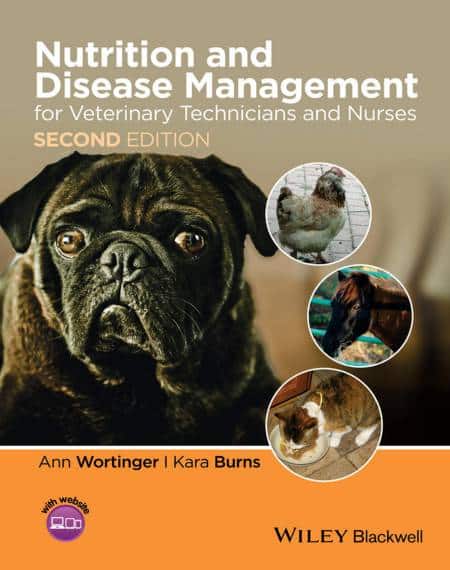Nutrition and Disease Management for Veterinary Technicians and Nurses. Nutrition is an area of veterinary medicine that is very easy for the technician to have an active role in.
Nutrition and Disease Management for Veterinary Technicians and Nurses

Many of the commercial food producers have even concentrated on educating technicians on nutrition. There are nutrition tracks at most national conferences, as well as on-line learning programs.
As with any other area of education, you still need to know the basics to understand what is being taught, and unfortunately this is often not addressed for technicians. While chemistry, microbiology and math are required at most schools, even these do not adequately address basic animal nutrition. We all are taught the basic nutrients in a diet: water, protein, fats and carbohydrates, but how do they work together, what happens to them inside the body and what changes occur with aging or disease?
The book is organized into five sections. The 1st section addresses the basics of nutrition by looking at energy and nutrients, how the individual nutrients of water, carbohydrates, fats, proteins, vitamins and minerals are utilized by the body, digestions and absorption of these nutrients and finally energy balance. Section 2 covers nutritional requirements for cats and dogs by going through the history and regulation of pets food, understanding how to read pet food labels, understanding nutrient content and types of foods and how they differ, and evaluating raw food diets, preservatives and homemade diets. Section 3 covers different feeding regimens, body condition scoring both definition and use, and takes feeding from pregnancy and lactation through neonatal, growth and adult maintenance feeding and into geriatrics. Section 3 also covers feeding for performance animals, special feeding requirement for cats, nutrition myths, the use of nutritional support and assisted feeding techniques. Section 4 is new and covers nutritional management of disease, looking at GI disease, hepatic disease, weight management, FLUTD and others. The final section, also new, addresses the feeding management of other species, including horses, birds, and pocket pets. Each section will build on the information covered in previous sections, allowing for practical use of the information learned.
Password: pdflibrary.net
